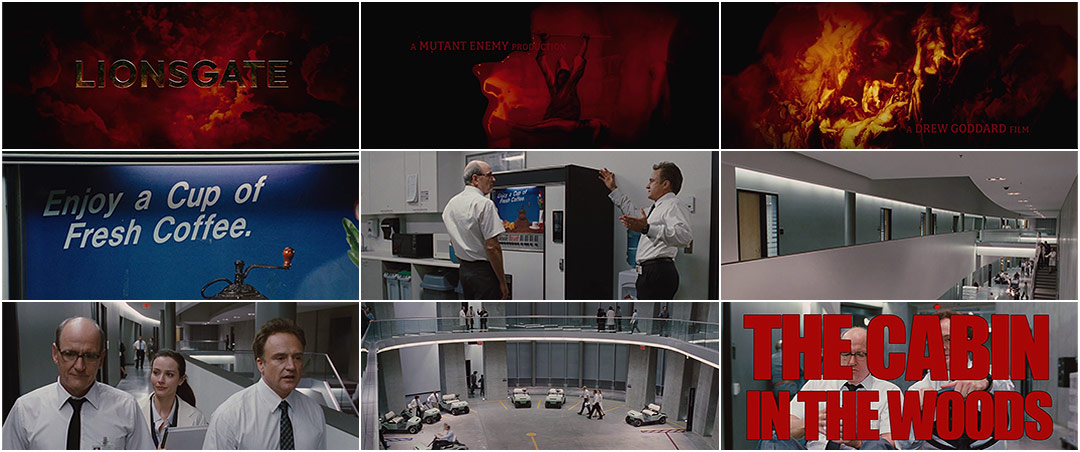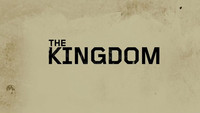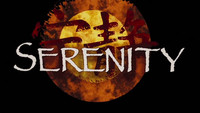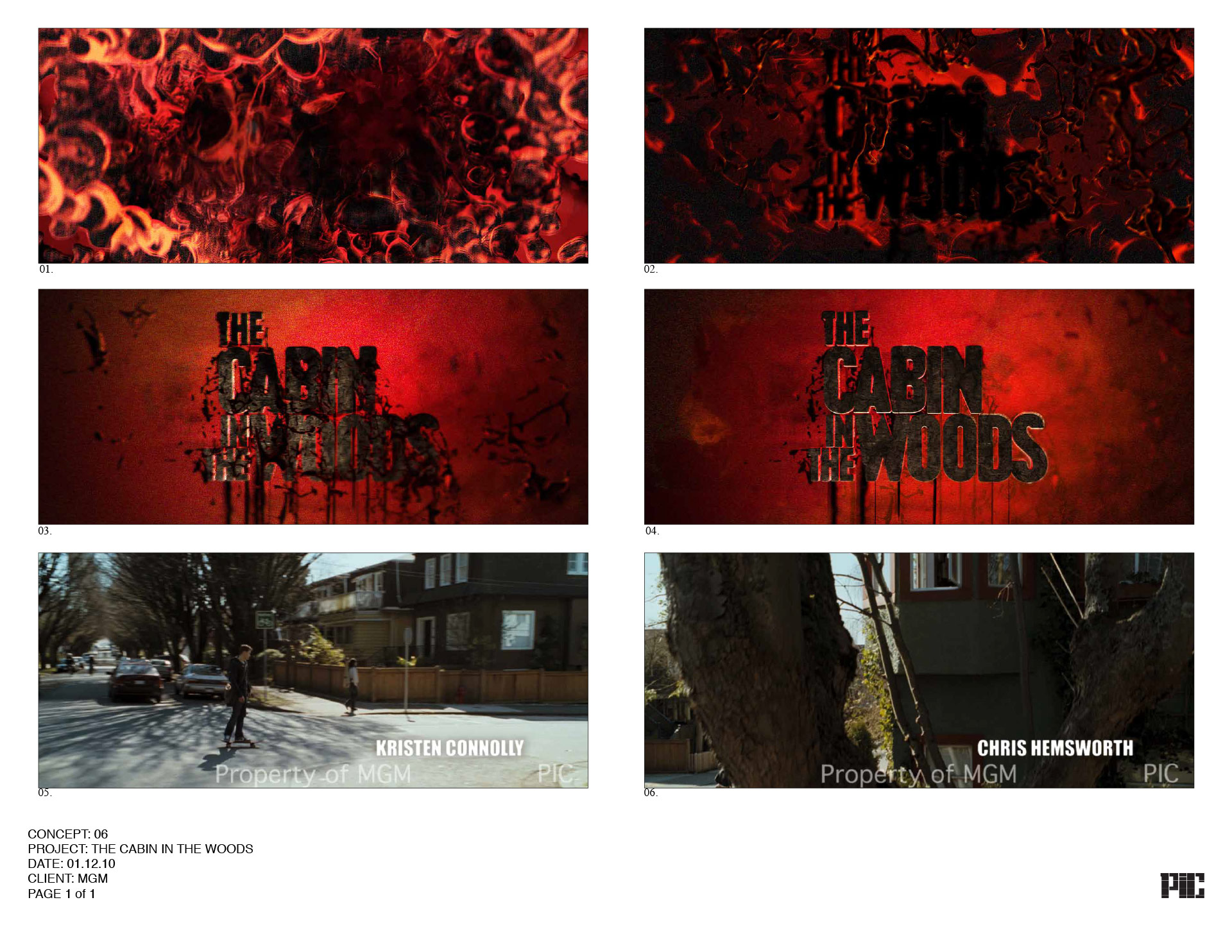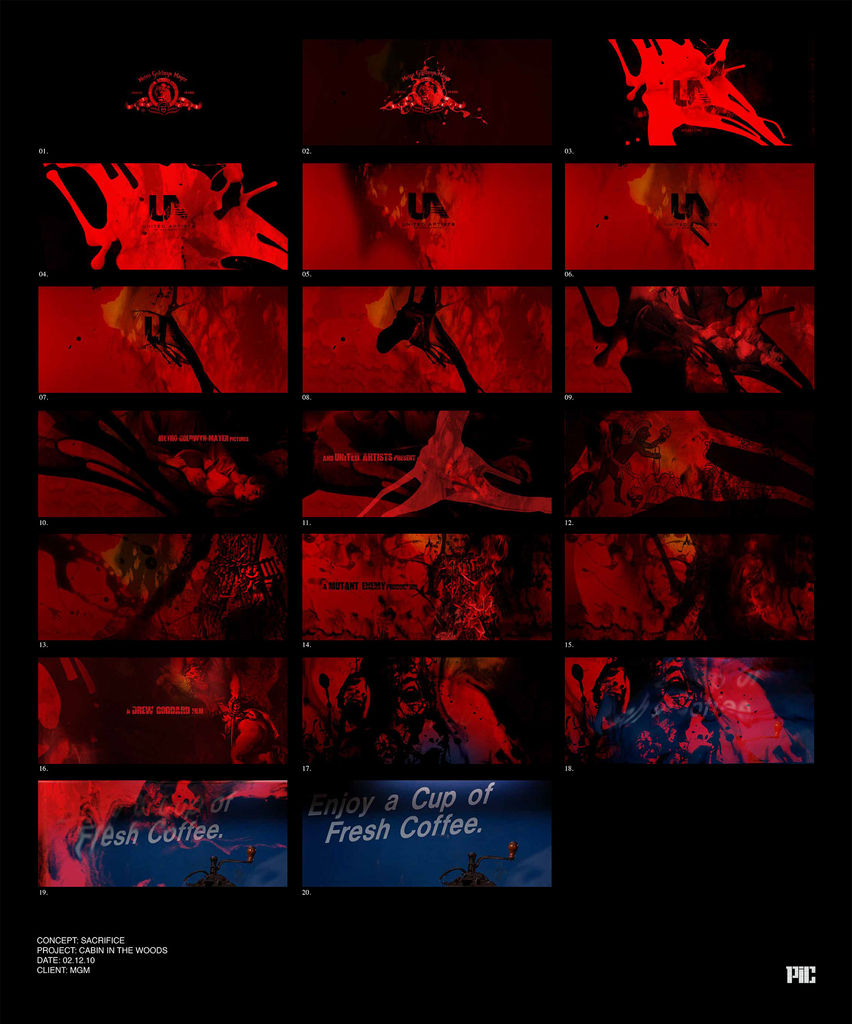A history of violence writ in blood. Millennia of human cruelty billow out into a quiet void: torture, murder, ritual sacrifice, untold suffering, fresh coffee... Huh? The images of savage protocol and hematic ceremony are jarringly replaced by an all too familiar scene: a hot cuppa joe and the morning commute of two government employees.
Between Sitterson and Hadley’s mundane water cooler chit-chat and determined caffeine intake lie hints of some unnatural purpose. Is it the worried tone of their colleague’s voice or perhaps it’s the sinister-looking subterranean locale they call an office? As the title card for The Cabin in the Woods slams on screen, we realize that this is not your typical nine to five.
A discussion with Director DREW GODDARD, and Main Title Designers JARIK VAN SLUIJS and PAMELA B. GREEN of PIC Agency.
This sequence is a bit of a treat, I think. It's fun to talk about a title sequence that's very aware of itself – almost a parody of a title sequence.
DG: Yeah, and that’s sort of the spirit of the film itself.
So where did that self-parodying idea come from? It seems like it goes into being a serious sequence, breaks it up, and then comes back to it.
DG: Well, it's weird because at the script stage I always thought the movie would start without a title sequence and we would just open on the copy machine. The one thing we knew we had scriptwise was the hard cut to “Cabin in the Woods” in the middle of the guys talking about baby-proofing their house. I was delighted by the idea that the audience might think they walked into the wrong movie...
And that was sort of our goal. Then, of course, we sent it to the studio and they said, “We're concerned that people are going to think they're in the wrong movie.” And we were like, “That's what we intended!” But their concerns were enough that we started thinking about options. The way most horror movies open is with, you know, the girl running through the woods and she gets killed and that sets the tone. And we thought, what if we designed a sequence that hints where the movie is going and sets the tone without stepping on the break room scene?
So it built organically from that. And once I realized that we had an opportunity to lay the seeds for the ending, it started getting really exciting. Then once PIC came in, I suddenly couldn’t imagine the movie without it. But we definitely didn’t start with a title sequence in mind.
Did you have a relationship with PIC previously?
DG: I did not. Joss had worked with PIC on Serenity, if I'm not mistaken, right guys?
PG: Yeah. I mean, it was like a blind date.
DG: Exactly. But I was a huge fan! I liked The Kingdom – the work they did on that sequence.
And it felt like – even though it's a wildly different movie – the economy with which they told an immense amount of story was impressive to me. I knew I wanted that sense of history with our titles so you could feel that there were larger themes at play.
PG: I think Drew also wanted it to feel organic to the film and not some crazy CGI sequence – like it was meant to be from the very beginning, from the script phase – not just something that's tagged on.
DG: Yeah, you're absolutely right. So much of the Cabin aesthetic was about not feeling CGI through the film. It was important that we figure out a way to get that handmade quality into the titles.

Prologue sacrifice reference images
So when you connected with PIC for your blind date, what were your first conversations?
DG: The concept was basically to touch on sacrifice and put it in a historical context and I wanted it to feel bloody... because this movie gets particularly bloody. Those were the parameters.
JVS: I think we were shown some reference images for the film itself and we sort of interpreted and adjusted those. We had an illustrator work on them to get the feeling of authenticity in there and tell a little story of sacrifices throughout time.
So how did you determine the moment to cut out of that and go on to your next scene?
DG: You know, it's sort of instinct. David Julyan wrote us this beautiful piece of music that just builds and swells and we wanted it to reach its crescendo and then slam to, you know, the coffee machine. It was important because it tells the audience right away what type of movie this is. It sets the tone immediately. The juxtaposition between the operatic horror and the mundane breakroom is the soul of Cabin in the Woods and the title sequence sets that up immediately.
Prologue treatments
So what were the production details in creating it? What were the next stages?
DG: I'll let you guys talk about it, but this is my favorite part of the title sequence, for the record.
For me, there's almost no better way to set the tone of a film than with the titles and that can be simple and elegant, quiet and restrained, or it can be full of bombast.
JVS: Well, we sort of knew what it needed to look like. The problem was we didn't know exactly how to get it there, and we also treated the logos that were ahead of the movie – MGM and United Artists, initially.
Those would be changed afterwards, but we learned from there that we couldn't go in a completely CGI route because it just looked too slick. So we went back to a more hands-on, in-camera effect, and we started with stills and ink, shooting elements. Eventually, through a kind of trial-and-error we knew what kind of consistency we had to have.
PG: Don't tell him everything!
JVS: Well, it's part of it!
No, tell us everything. That's the whole point!
JVS: [laughs] We needed to have a certain consistency and we also needed to guide the “blood” very exactly because the camera moves from one splatter to the next and within the reflections, we see the sacrifices. Well, we ended up shooting Hershey's chocolate into relief molds made out of blue Play-Doh so we could key it out. Once we did that, we did one test and it worked so well. All we needed to do was literally key out the blue, change it to red, and we had the look!
Blood process
DG: It was awesome. I think I was driving them crazy because I just kept saying, "It doesn't look viscous enough," when we saw the first test. It's hard because most liquid doesn't quite have the consistency of blood, you know? But I remember when they showed me the first chocolate test, the hair stood up on the back of my neck. I said, “Oh, my god. You guys figured it out," but I didn't know what they’d used. I thought it was actually blood or something.
Then they told me it was chocolate. It made me so happy.
That's funny. When you watch the opening logos and the treatment, it’s easy to assume it’s all CG.
DG: I know. It had that handmade quality I was looking for. You know, at film school I studied under Stan Brakhage and I think he'd be proud of me for just heating up chocolate.

Main Title concepts
So, you shot the chocolate. What came next?
PG: Well, then we needed to bring it in and start animating it with the illustration.
DG: To get the reflections in the chocolate.
So that's all compositing work? It’s all done digitally?
JVS: Yes.
PG: And a little bit of 3D in that as well. And while that was in the oven, we dealt with the other stuff. [laughs] That meant creating the font for the title from scratch, actually.
DG: Oh, yeah.
JVS: We went through a series of permutations and explorations. But the idea of having a big title, that was always there in the temporary cut, right, Drew?
DG: Yeah, but we played with the size. There was a lot of debate as to whether we should cut to the title or slap it over the boys talking and fill up the frame.
I love in Dr. Strangelove how the title comes up and takes up the whole screen. I thought we should try that if we could. It was fun to see how far we could push it. Haha, it’s funny because on one level it’s important because it’s funny and it gets laughs but it’s also crucial because it really sets the tone for the movie! It tells you that whatever you expect, we’re probably going to do the opposite and we are going to do it quickly.
Main Title animation concepts, including final version
And then it’s into the next scene, which has a much more simplified typographic approach. Can you talk about that, Pamela?
PG: Well, we should also mention that we actually saw the whole film before we came up with the sequence. So we knew that whatever we did – even though some sections were serious – it didn’t need to be too perfect with regard to the illustrations and animations. With the “type over scene," we did shoot a lot of actual type with splatters and so forth before we got to the final for which we created a whole alphabet. We still enjoy doing things by hand – the opening, but also the “type over scene" – because you get that organic effect like it was shot on film.
DG: Yea, it makes it feel more accidental. It’s hard to be truly random on a computer. The way the splatter suddenly falls, it’s not like you can consciously understand it but I do believe you can feel the difference when it’s real.
Type Over Scene concepts
So what was the working relationship between you all? What was the back and forth like with regard to revisions?
PG: Actually it wasn't that bad [laughs]. What we like about Drew is that he's very direct; he knew what he wanted. Some things were... experimental, if you will, at the beginning, but he has a cinematic eye and that was very helpful.
DG: Yea, and for me it was just a lot of fun. I think the chocolate story sort of illustrates what you want in a creative relationship: people willing to roll up their sleeves and get in the trenches with you. And, if i'm not mistaken, PIC didn't have a lot of time on this.
We had to complete everything before the lights went out at MGM. We locked everything down.
PG: The usual! It’s like we needed it finished the day before.
DG: I know, haha.
PG: I guess there was a lot going on. MGM was going through a crazy time.
DG: Yeah, we were dealing with a bankruptcy. And like I said, the titles weren't planned through the shooting of the film so we came to it late. And a lot of the energy went into figuring out the viscosity of the blood! It was really hard. But when you have those problems to solve and you've got tremendously talented artists to do it, that's where moviemaking gets fun.
PG: And Hershey's chocolate has been our friend over the years.
DG: [laughs] I'm sure the people at Hershey's would be thrilled to hear how we used their product for this film.
You could have gotten a great sponsor right there.
DG: Haha. Nothing sells chocolate better than being sacrificed.
So, regarding the issues with MGM, did you complete this sequence when you did the film? Because it was a few years back, right?
DG: Yeah, we had to complete everything before the lights went out at MGM. We locked everything down.
PG: There was an issue with treating the MGM and UA logos at the time, too.
DG: That's right. We made the MGM lion roar and as it roared it turned to blood. It was awesome. But once it switched, we had to take them off and put Lionsgate on. Weirdly, the Lionsgate logo is blood-red and gears-y anyway, which totally fit Cabin's aesthetic – we didn't even have to treat that.
PG: Yeah, it was pretty cool.
DG: I wonder if I'm allowed to put the MGM and UA logos we did on a DVD or something.
Original MGM/UA logo treatment
So, in general – and this question is for both of you – what role do you think title sequences play in feature films?
DG: For me, there's almost no better way to set the tone of a film than with the titles and that can be simple and elegant, quiet and restrained, or it can be full of bombast. There's so many different ways to play it and because, as an audience, we're conditioned to seeing titles early, it's a wonderful way to communicate the tone without having to hit the audience over the head.
PG: From our end, and one of the reasons I personally got into this – we started this company seven-and-a-half years ago, but we met at a company called Kaleidoscope – is that you can tell stories through titles. It’s fascinating. One of the other roles besides setting the tone – and this is something that’s been happening a lot lately – is to fix script trouble in the backstory of the film. So instead of turning on the camera and doing reshoots to tell that backstory, you use the titles – whether it's through graphics, stock footage, or, you know, shooting some elements to establish it. We've been doing that kind of titles storytelling a lot since The Kingdom.
With Red Dawn – which hopefully will be coming out soon – we did it twice. We did it to show the relationship between the U.S. and China, to get into the film, and then they needed us to redo it so that it was the U.S. and North Korea. We did a whole backstory to connect to the film.
The Express was another one – the football story. We're doing it with several movies at the moment but I'm not allowed to talk about them until they're out! But a lot of studios come to us because we're very story-conscious and able to help with problem-solving.
JVS: Sometimes that means telling them that they don't need a sequence at all.

"Sacrifice" storyboard
You can talk yourself out of work! That's good.
JVS: We're pretty good at that too. [laughs] But really, if a movie doesn't need it and we feel strongly about it and it's just going to feel like jewelry, then…
DG: Boy, that's so refreshing to hear because it's amazing how much people will try to put that on! I understand, even as a filmmaker, how you can start to think, "Oh, maybe we do need more here." It's nice when the people that are making the titles or effects can tell you, "No, no. You don't even need it."
PG: Oh, yeah. They try to get the film to 88 minutes because it's some kind of guideline, but we don’t mind saying, "Hey, you know what? Just do the presentation cards and a title and everything at the end." They look at us like we're nuts.
JVS: Sometimes you just need to get to the story. You’ve got to grab the audience in the first three minutes, and if they don't do it, we'll need to do it, but sometimes a long sequence at the head of the film doesn't work. Something like a hybrid, like Cabin in the Woods, is great because it's the presentation cards but it teases you and then – bam! – you slam into the movie, which is fantastic.
OK, final question. What are your favorite sequences?
DG: While we were working on Cabin, I saw the titles to Enter the Void. I just thought, "Oh, okay. I now feel humbled."
JVS: Oh, yeah. I agree.
DG: They're so good. I mean, they're so good. It almost makes me want to stop filmmaking altogether because I feel like everything that could be done was done with those title cards. Each one of them is a beautiful work of art. The fact that they made each one in a different font is pretty remarkable.
And then I always go back to Monty Python and the Holy Grail because the idea – and it was very influential on Cabin. I mean, Python in general has just been influential on me – but the idea that there are no rules, that you could actually have the people making the titles get fired in the middle of the titles blew my mind when I was a kid. It stuck with me ever since. How about you guys?
JVS: To Kill a Mockingbird. Because it's all shot and great story. It sets the tone.
DG: That's a much classier answer than mine. I want to change it to To Kill a Mockingbird, too.
Unfortunately, Stephen Frankfurt just passed away, which is really sad.
JVS: Yeah.
PG: Yeah. I think the simple, more clean ones are the ones that I like. I mean, now everything is becoming such a derivative of each other.
Right.
PG: Titles are becoming a little bit insane. I mean, the original James Bond ones were amazing. But then they got a bit too crazy! They went too far. I'm a huge fan of Saul Bass. Anything Hitchcock.
DG: The Vertigo titles are hard to beat.
PG: Even – and I don't know who did the sequence – but even Charade.
That was Maurice Binder, who did the Bond titles.
PG: Oh, wow. Yeah, that.
DG: Did Binder do Goldfinger? Who was that?
No, that was Robert Brownjohn.
DG: Yeah, I loved the Goldfinger titles. One of the fun parts of this job is finding new ways to work with type. We’ve seen so many that you start to think, "Is there anything left to do?"
PG: Exactly. We try. A lot of people ask, "Oh, can you do it like this movie that you worked on? Can you guys do something like that?" And, you know... we don't want to do that. First of all, the style of a past project wouldn’t fit their particular film or TV show or whatever it is! We have to come up with other ways to tell their story and then somehow put in the energy of our past work because they're falling in love with that, with those transitions. I mean, it's a good box to be put in, but we don’t want to make derivative work.
It's nice to hear that you sort of push back against that. It'd probably be very easy for you to agree and just stamp out another sequence.
PG: Yeah, we don't want to do that. And actually, with something like The Kingdom, it'll never happen again because everything fit a certain way. People seem to think that we have templates here! It's funny. People just don't have the knowledge. Even though we're in 2012 and there's the Internet people don't know how these things get made.
Well, there's a website about that...
PG: [laughs] And believe me, I do send people there! Especially when they ask me what I do. I'll never forget it. When we were first starting, I said, "I do titles and I'd love to work on your film," and this girl was like, "Oh, but we already have a title for our film." [laughs]
JVS: That'd be a good job. Just come up with titles for films. I'd do that.
PG: It's comedy. It's what makes it great, in the end.




